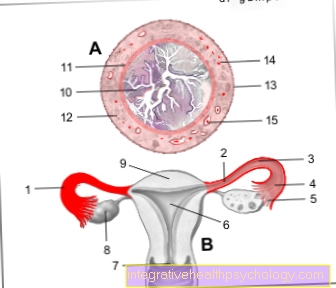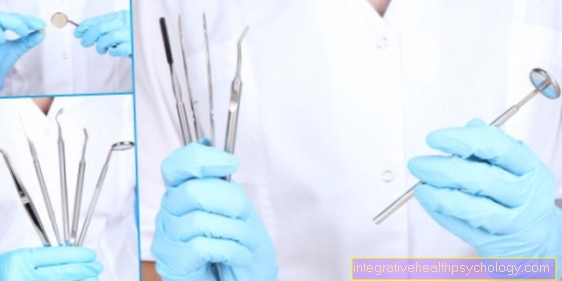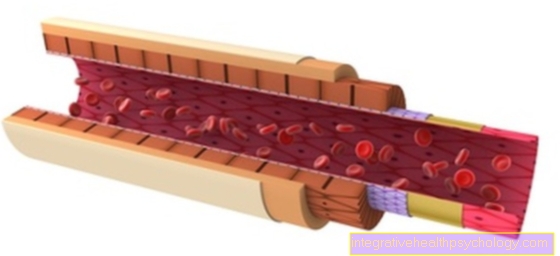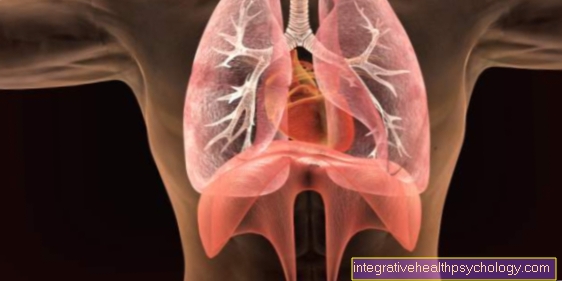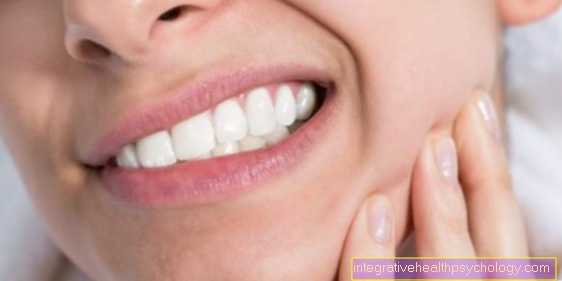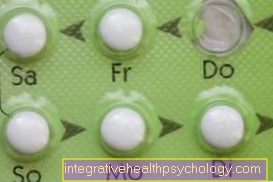Phosphate cement
introduction
Phosphate cement has been used in dentistry for over a hundred years. It is white in color.
Phosphate cement can be mixed from a powder and a liquid and is often used as a luting cement for the permanent insertion of metal crowns or veneer crowns and bridges. It can also be used as an underfill.

Composition of phosphate cement
Phosphate cement consists of cement powder and liquid.
The cement powder contains approx.
- 80% zinc oxide (ZnO),
- 10% magnesium oxide (MgO),
- 5% calcium fluoride (CaF2),
- 4% silicon dioxide (SiO2),
- 1% aluminum oxide (Al2O3).
The liquid consists of 45-64% phosphoric acid and zinc and aluminum buffers, which are supposed to reduce the setting time.
You might also be interested in these topics:
- Filling materials
- Tooth filling with cement
What is phosphate cement used for?
Phosphate cement is very commonly used in the dental office. It is used for the permanent fixation of metallic crowns and bridges and can also be used as an underfill.
It has high compressive strength and minimal shrinkage.
In contrast to other luting materials such as glass ionomer cement or composites, phosphate cement is less sensitive to moisture and easy to process.
Find out more at:
- Temporary filling
- dentures
- bridge
- Crown
Phosphate cement as an underfill
In the past, phosphate cement was very often used as an underfill before placing an amalgam filling.
It can also be used as an underfill after a root canal treatment. However, since it has a low flexural strength and does not adhere to dentin, it can break off or crumble off quickly.
In order to use phosphate cement as an underfill, it should be mixed in a firm consistency and inserted into the previously dried tooth with a suitable metal tamper, such as a flat tamper or a small ball tamper or Heidemann spatula. The processing time after mixing is about two minutes.
The phosphate cement should be hardened before further final filling. This is also the case for 7-8 minutes, but depends on the mixing consistency.
also read: Amalgam
Processing of phosphate cement
Phosphate cement is mixed with a metallic cement spatula on a cool surface, for example a glass plate. The mixing temperature should be room temperature.
The powder is mixed into the liquid.
The consistency for inserting the crowns and bridges should be creamy, whereas a firmer consistency is required for underfilling. For underfilling, the phosphate cement is inserted into the tooth with a suitable pusher or Heidemann spatula.
The phosphate cement will harden after approx. 7-8 minutes. Nevertheless, after placing crowns and bridges with phosphate cement, patients should not eat any sticky or hard food on the new dentures for a day in order to guarantee complete hardening. Excess cement residues must be removed, otherwise inflammation of the gums can occur.
What problems can arise when using phosphate cement?
In some studies and investigations you can read about concerns about the use of phosphate cement on vital (i.e. not root-treated) teeth. While the cement is still setting, the phosphoric acid is active and can be used on the free dentine surface Odontoblasts (Cells of the dental nerve) irritate. As a result, these cells withdraw further into the interior of the tooth (to the pulp) and irritant dentine is formed.
In addition, the phosphate cement can dissolve at the crown margins over a longer period of time and thus create a cavity in which plaque and food residues can settle and thus attack the tooth below the crown and, in the worst case, destroy it unnoticed.
In addition, cement residues should be thoroughly removed after insertion, as otherwise this can quickly lead to gum inflammation in this area.
Phosphate cement is also rather poorly suited as a temporary filling due to its low flexural strength. It can break off quickly under load and, like all cements, can be washed out. In addition, phosphate cement does not have an adhesive hold on dentin.
Allergy to phosphate cement
Allergies to components of phosphate cement are possible but very rare. In most cases, phosphate cement is well tolerated.
If symptoms such as reddening of the oral mucosa, itching or burning in the mouth occur after inserting a new crown or bridge with phosphate cement, then you should see the dentist. An allergic reaction could occur.
Find out more at: Allergic reaction
Recommendations from the editorial team
- Filling materials
- Tooth filling with cement
- dentures
- bridge
- Crown


